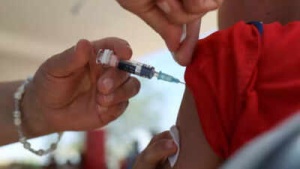Skin cancer is a prevalent form of cancer worldwide, often manifesting as subtle changes to the skin like a new mole or a slight alteration to an existing one. Early detection significantly improves treatment outcomes. Therefore, understanding the signs of potentially cancerous spots is crucial. Be it a new growth, an atypical mole, or a non-healing sore, early detection remains the cornerstone of successful treatment. Below are expert-backed tips to aid in spotting early signs of skin cancer and determining when a medical consultation is necessary.
The ABCDE method serves as a valuable tool for identifying melanoma, a serious form of skin cancer. Here's a breakdown:
Any mole displaying these characteristics warrants immediate attention from a dermatologist.

Persistent skin sores or scabs that repeatedly heal and reappear, or simply refuse to heal, can be an early indication of basal or squamous cell carcinoma. These sores often manifest as pink, red, or slightly scaly patches, potentially bleeding or oozing. Any sore persisting for over three weeks or recurring in the same location should not be ignored. These persistent wounds or sores, particularly on the face, arms, or scalp, require medical evaluation as they may be subtle indicators of skin cancer.

Moles are typically stable and painless. However, a mole that begins to itch, becomes tender, bleeds, or develops a crust could be a warning sign of skin cancer and requires careful evaluation. These symptoms often point to inflammation or structural changes within the skin, potentially signaling a more serious condition than a typical mole. Consulting a skin specialist is advisable if you observe any of these changes.

Skin cancers don't always originate from pre-existing moles. They can also develop from new growths, such as small lumps, shiny bumps, or rough patches, particularly in areas frequently exposed to sunlight. Prompt evaluation by a skin specialist is essential for any such findings.

If a mole's color suddenly changes or spreads into the surrounding skin, or if it develops fading edges, it could be a sign of melanoma. This irregular pigment spread suggests the mole might be growing deeper or wider, necessitating immediate attention. Regular comparison of your moles over time, aided by photographs if necessary, is crucial for detecting changes indicative of skin cancer. Consulting a dermatologist for evaluation at the earliest sign of such changes is strongly recommended.

Newer articles
Older articles
 Gavaskar Calls for Kuldeep Yadav's Inclusion in Second Test Amid Bumrah Fitness Concerns, Cites Edgbaston Spin Advantage
Gavaskar Calls for Kuldeep Yadav's Inclusion in Second Test Amid Bumrah Fitness Concerns, Cites Edgbaston Spin Advantage
 Indian Astronaut Shukla Arrives at ISS, Ushering in New Era for Space Program
OR
India Celebrates as Shukla Reaches ISS, Advancing Ambitious Space Goals
Indian Astronaut Shukla Arrives at ISS, Ushering in New Era for Space Program
OR
India Celebrates as Shukla Reaches ISS, Advancing Ambitious Space Goals
 Rishabh Pant Revolutionizing Cricket, Says Greg Chappell
Rishabh Pant Revolutionizing Cricket, Says Greg Chappell
 Toxic Workplace Warning Signs: Spot the Red Flags Early
Toxic Workplace Warning Signs: Spot the Red Flags Early
 Global Immunization Crisis: Millions of Children at Risk as Vaccine Coverage Lags, Study Reveals
Global Immunization Crisis: Millions of Children at Risk as Vaccine Coverage Lags, Study Reveals
 Moto G54 Price Slashed in India: Check Out the Discounted Rates and Specs
Moto G54 Price Slashed in India: Check Out the Discounted Rates and Specs
 Indian Cricket Star Mukesh Kumar and Wife Divya Singh Announce the Arrival of Baby Boy
Indian Cricket Star Mukesh Kumar and Wife Divya Singh Announce the Arrival of Baby Boy
 IRCTC Launches AI Chatbot 'AskDisha 2.0' to Revolutionize Train Ticket Booking and Customer Service
IRCTC Launches AI Chatbot 'AskDisha 2.0' to Revolutionize Train Ticket Booking and Customer Service
 Cummins Lauds Australia's Dominant Start to WTC Campaign After West Indies Series Win
Cummins Lauds Australia's Dominant Start to WTC Campaign After West Indies Series Win
 Smith Targets Test Return After Innovative Baseball Cage Rehab in New York
Smith Targets Test Return After Innovative Baseball Cage Rehab in New York